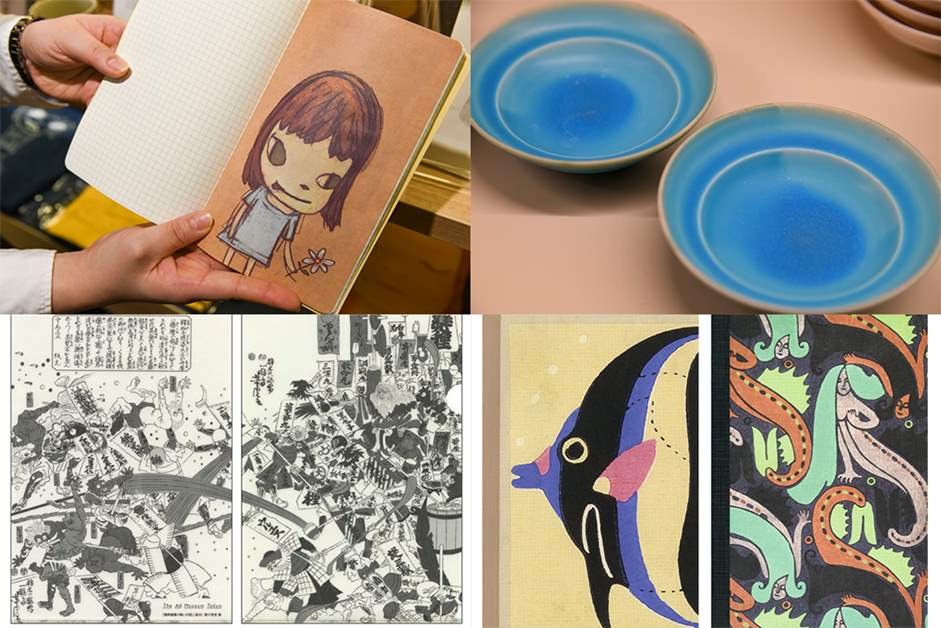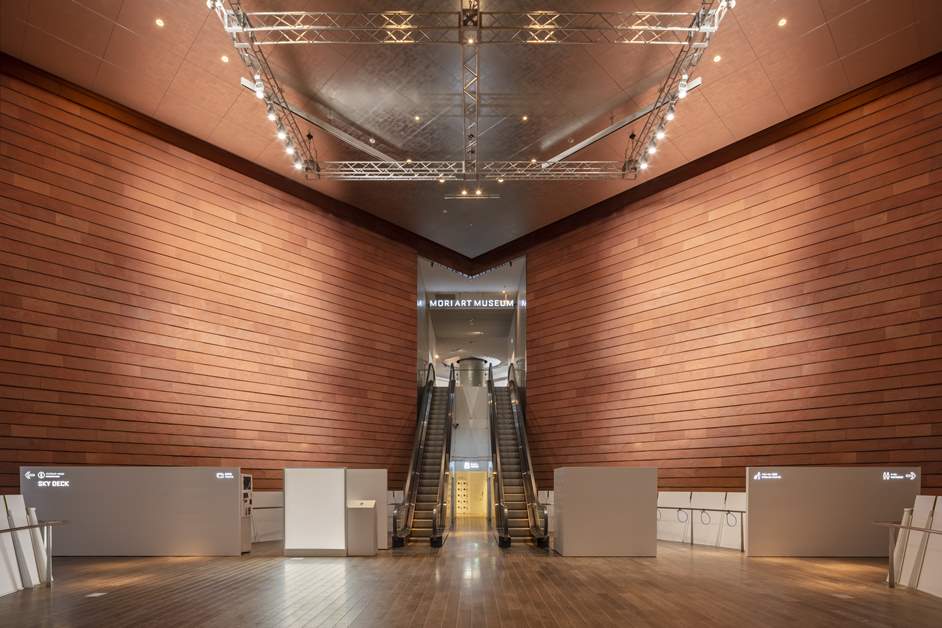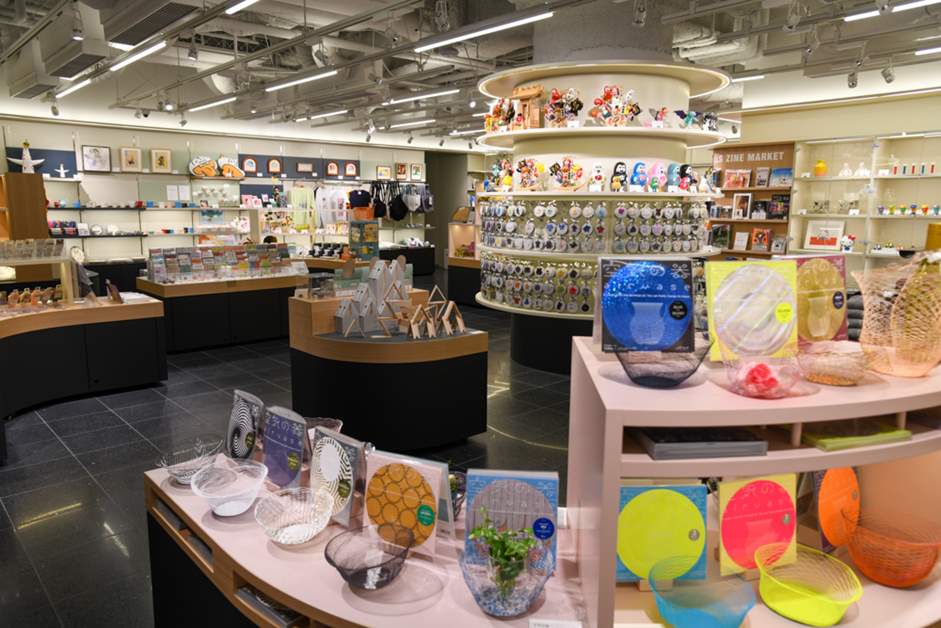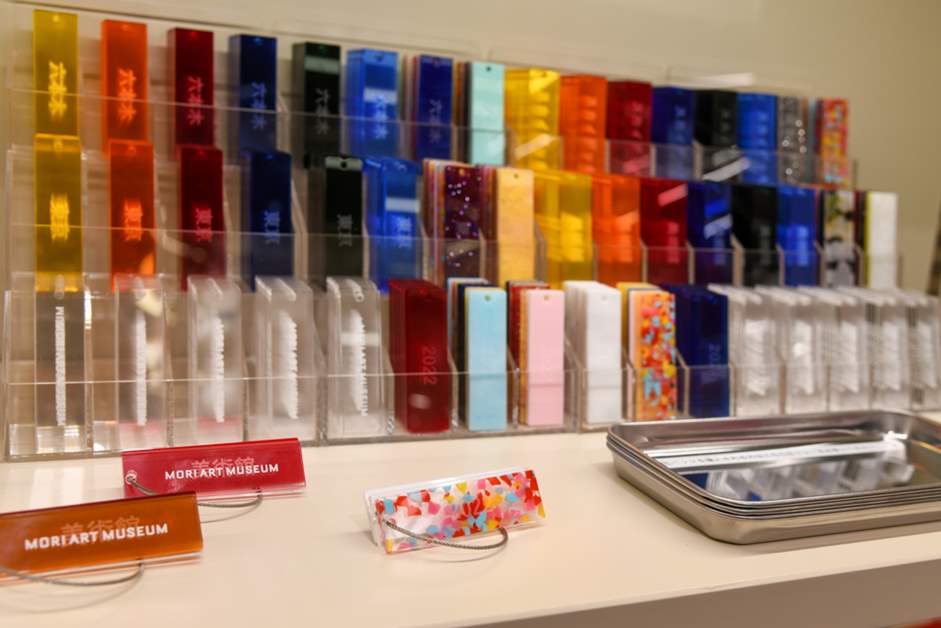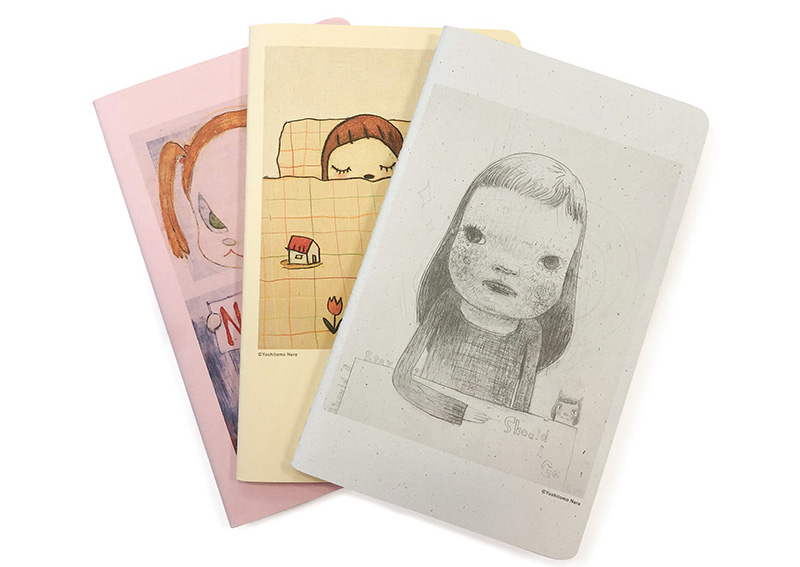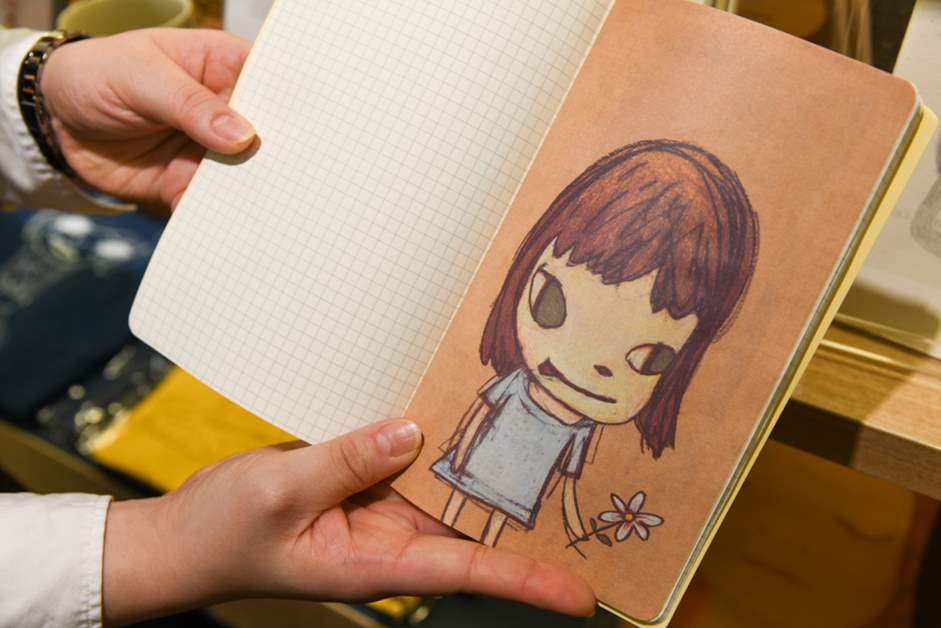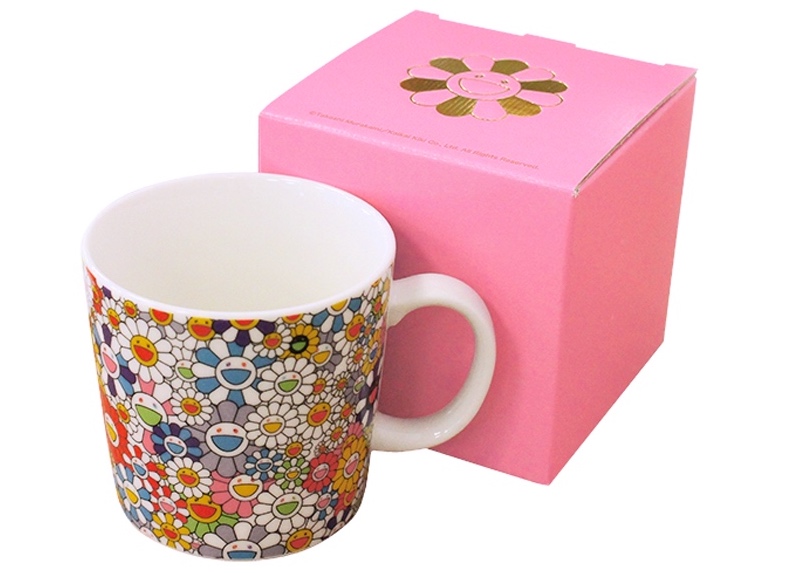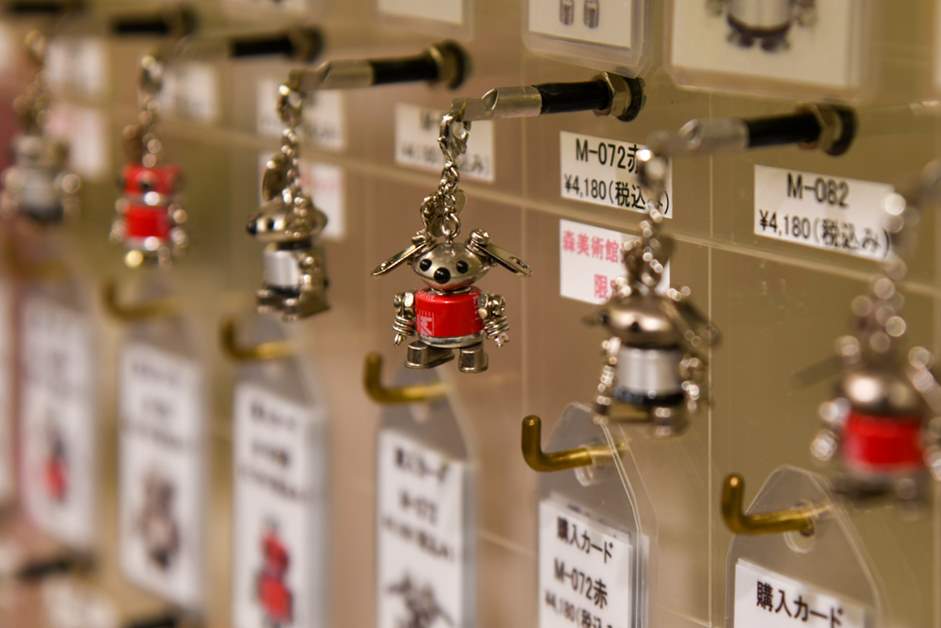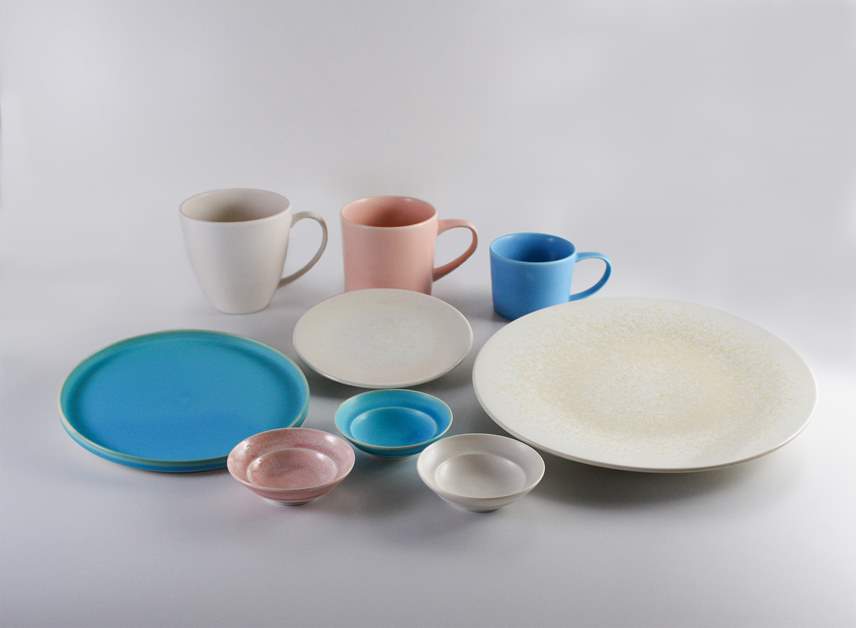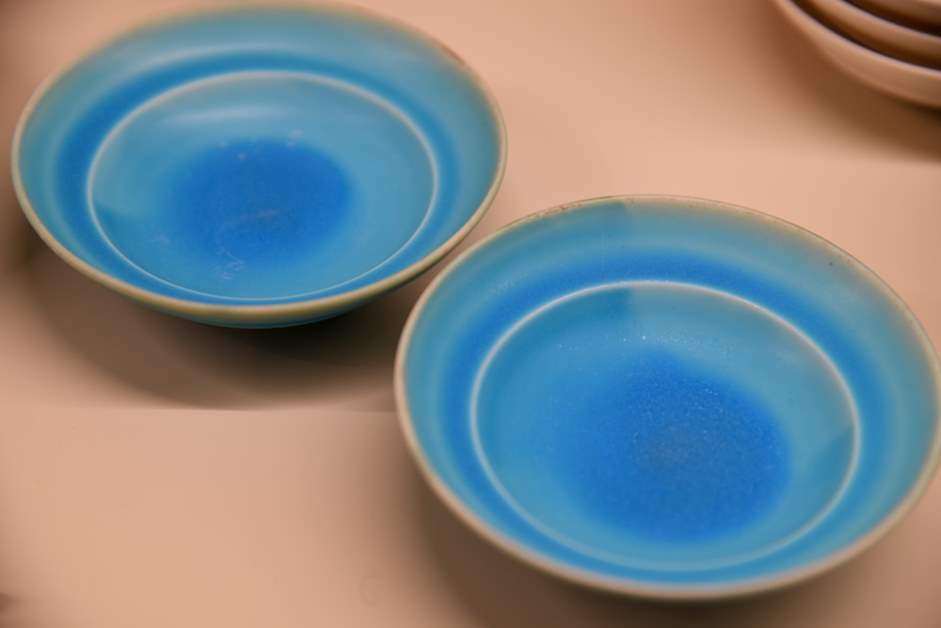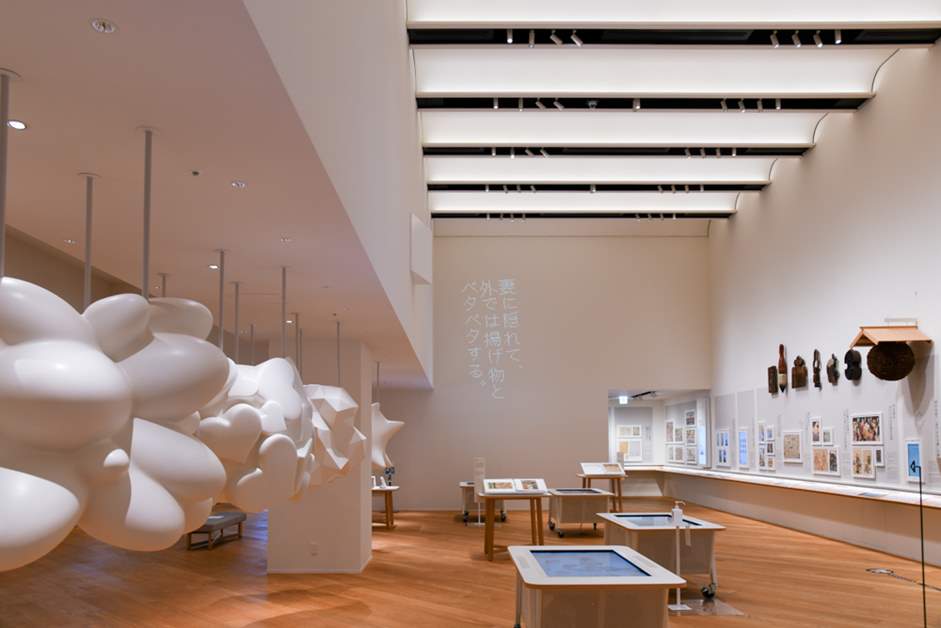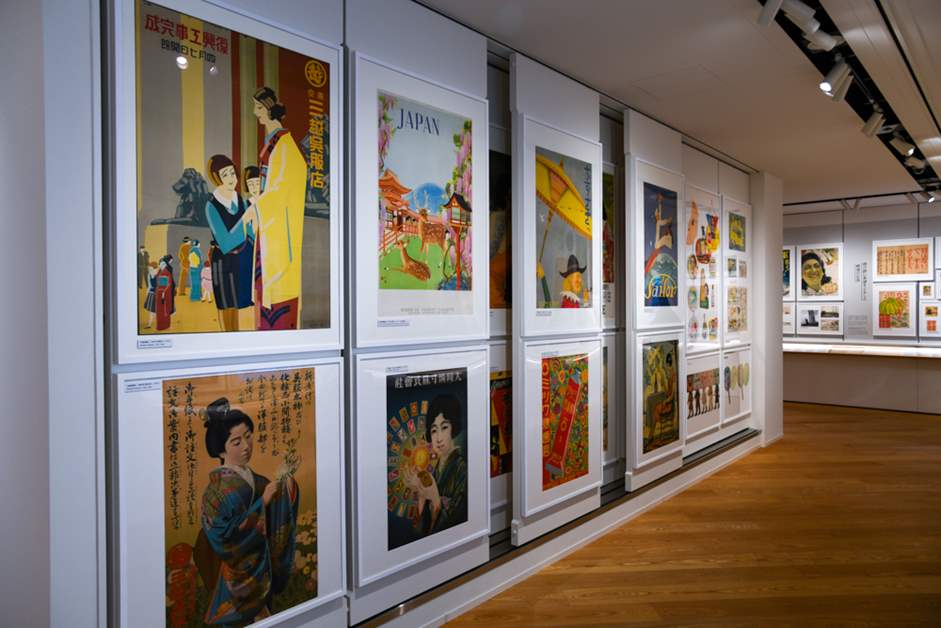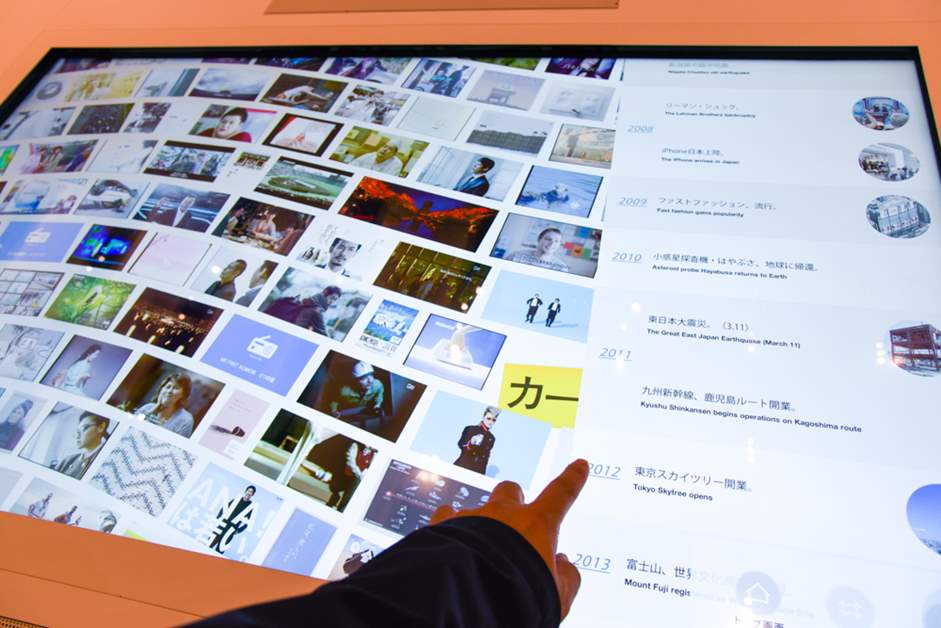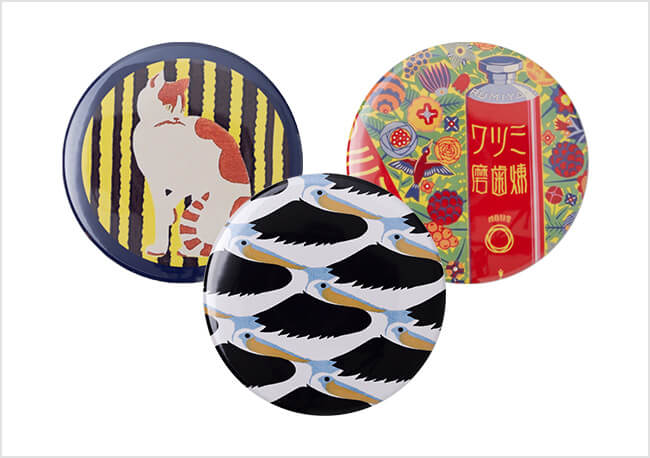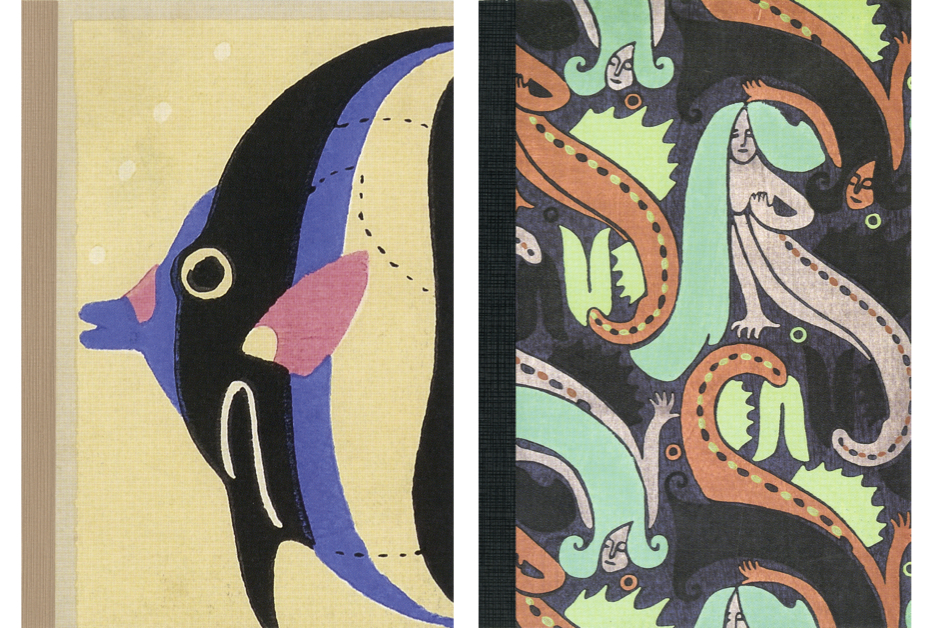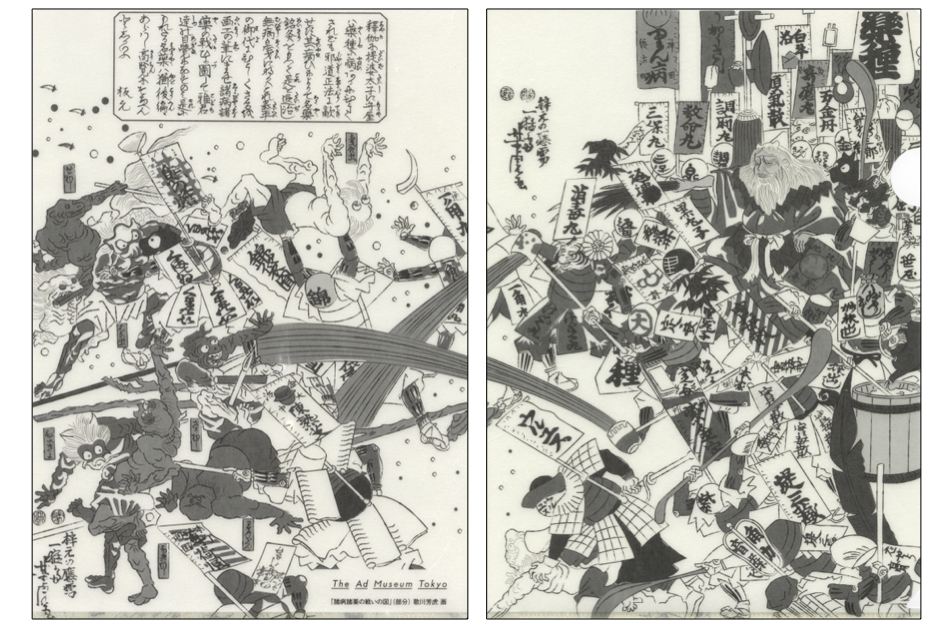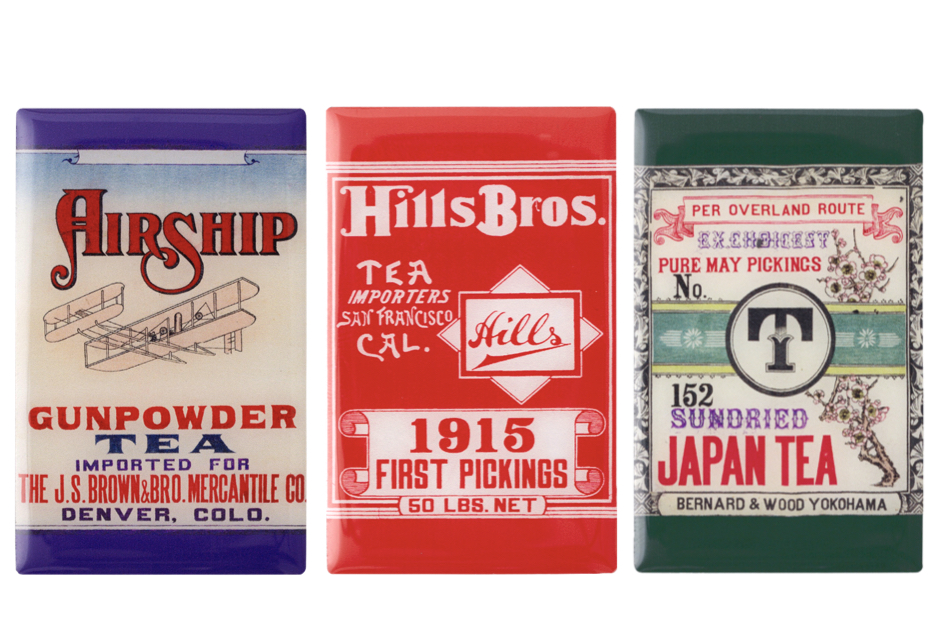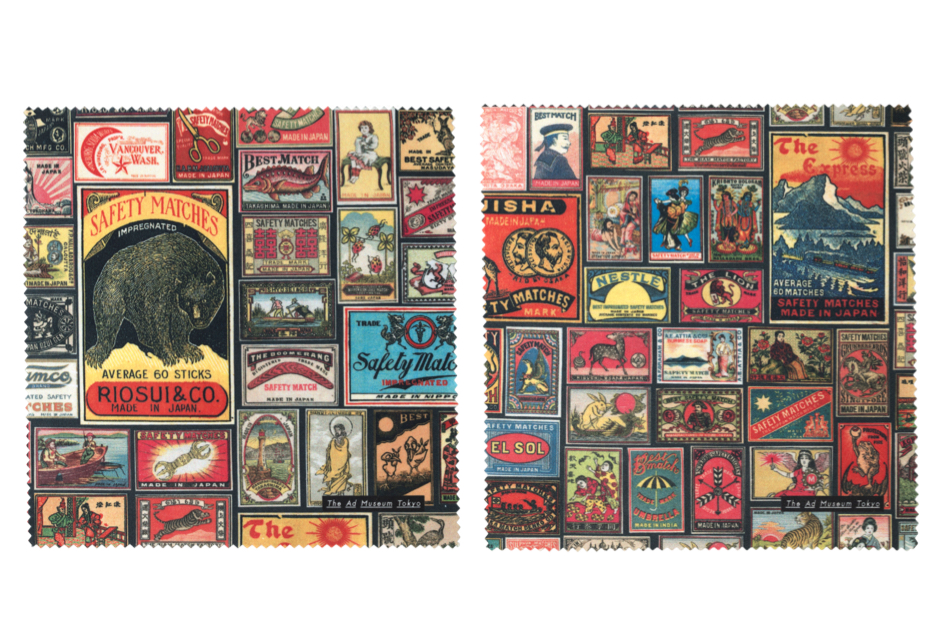Five Popular Original Goods in Museum Ships at Minato, Tokyo: Mori Art Museum and Ad Museum Tokyo
Minato Ward, Tokyo is home to many unique exhibition facilities. Of those facilities, some have museum shops built next to them, where you can find original items suitable for souvenirs. Here, we will be introducing goods from museum shops. In this second article of the series, we will be showing goods from "Mori Art Museum" and "Ad Museum Tokyo."
Mori Art Museum, a hall of contemporary art located on the top floor of Roppongi Hills Mori Tower
Located on the 53rd floor of Roppongi Hills Mori Tower, Mori Art Museum opened in 2003 and has hosted numerous exhibitions of cutting-edge art, architecture, and design from around the world.
Interior (Center Atrium) Image provided by Mori Art Museum
The museum has two museum stores (The "Mori Art Museum Shop 53" inside the museum and the "Mori Art Museum Shop" on the 3rd floor of Roppongi Hills West Walk). This time we will introduce you to the flagship store, "Mori Art Museum Shop," which opened after last year's renovation.
The store offers not only souvenirs but also goods to bring art closer to people in their daily lives. The shop features items by some of Japan's leading contemporary artists, including Yayoi Kusama, Yoshitomo Nara, and Takashi Murakami, as well as items created by up-and-coming young artists.
Five Popular Original Goods from the Mori Art Museum Shop
First up is the "One-and-Only Key Chain" (500 yen per tag plate). One-and-Only" is a product line launched with upcycled brand NEWSED. The colorful tag plates are inscribed with words associated with the Mori Art Museum and its observatory, such as "art museum" and "sky deck".
Image provided by Mori Art Museum
The items are made from acrylic scraps generated within accessory production and fixture factories, which matches today's sustainability-oriented products.
The second item is the Yoshitomo Nara Moleskine Kaie Journal (set of 3, 3300 yen). Moleskin is a legendary notebook born in 19th century Paris and loved by many painters and writers. The notebook by Yoshitomo Nara, one of Japan's leading contemporary artists, is a special item that features more than 10 pages of his artwork not only on the front and back covers but also on the inside.
Image provided by Mori Art Museum
Some of the pages that do not contain his works can be detached and used as notes. The drawings by Nara-san may give us good imagination in our daily lives.
The "Takashi Murakami Ohana Mug" (3300 yen), with countless depictions of "Ohana," Takashi Murakami's signature work, is an especially popular and long-selling item. The mugs, which are also very popular with foreign tourists, make great gifts. Drinking your breakfast coffee from a mug with a pop design is sure to give you the power to get through the day in good spirits!
Image provided by Mori Art Museum
Next up is the "NANONANO Robot Object" miniature key chain (from 3080 yen). These miniature objects in the shapes of robots and animals are handmade one by one by artist Koichi Miyajima using electronic parts used in precision machinery.
Image provided by Mori Art Museum
Parents and children or couples can have items of different colors. The red coloring is exclusive to the Mori Art Museum Shop!
Lastly, "Ryota Aoki PRET A LINE" (from 1100 yen) is a series of ceramics by ceramic artist Ryota Aoki's project "RYOTA AOKI POTTERY". Based in Gifu Prefecture, Aoki-san actively works in Japan and around the world, creating unprecedented pieces by using unusual materials as glazes.
Image provided by Mori Art Museum
His delicately colored tableware is unique in that each piece has a different hue, even when the shape and color are the same, a flavor that cannot be achieved through mass production.
Some of the products introduced here are also available at the Mori Art Museum's online store. The store also has a gallery space and a special space where exhibitions of notable artists are held.
【MORI ART MUSEUM ONLINE SHOP】※Some items excluded.
https://shop.mori.art.museum
【MORI ART MUSEUM ONLINE SHOP】※Some items excluded.
https://shop.mori.art.museum
Ad Museum Tokyo, where you can encounter retro and nostalgic advertising design
Located on the second basement floor of Caretta Shiodome, "Ad Museum Tokyo" is Japan's only admission-free museum about advertising. The museum has a permanent exhibition entitled "History of Advertising in Japan," which introduces advertising culture from the Edo period to the present day, a special exhibition that presents the forefront of advertising, and a library with valuable materials. The three areas allow us to learn the past and present of advertising, something we are familiar with in our daily lives.
The permanent exhibition, which begins with a display of Nishiki-e from the Edo period, which is said to be the source of Japanese advertising, is a treasure box of posters and flyers from the Meiji to Heisei era.
In addition to two-dimensional works, there are also three-dimensional exhibits, such as the "rental umbrella" umbrellas that became part of the advertising activities of the Echigoya kimono store in Nihombashi and wooden signboards from the Edo period. There is also a "Digital Collection Table" where visitors can view TV commercials from the 1950s and other exhibits that are not just for viewing.
The museum store, located at the entrance, is filled with retro items decorated with old advertising designs. The items, all of which are designed by the museum staff with an emphasis on practicality and "something you would want to use yourself," are great gifts, such as postcards for 50 yen each and badges for 100 yen each, which you can easily hand out to your friends and colleagues.
Five Popular Ad Museum Tokyo Original Goods
The first item introduced here is a "mirror" (300 yen each) featuring an illustration by Sugiura Hisui, who is considered a pioneer of commercial design in Japan. Hisui's exhibit is one of the points of focus at the museum. The three patterns, "Cat," "Mitsuwa Toothpaste," and "Bird and Fish," are enduringly appealing even today.
The "A6 notebook" (300 yen each), also designed with "fish" and "mermaid" painted by Hisui Sugiura on the cover, is a collaboration with the "Flat Opening Notebook" manufactured by Nakamura Printing, a long-established town factory located in Kita Ward. The notebook opens flat, so it can be used both vertically and horizontally.
Next up is two types of transparent files. The "A4 Transparent File (Sumoka)" (200 yen) is a comical item designed from a collection of newspaper advertisements for Sumoka Toothpaste. The ads were created by legendary creative director Toshiro Kataoka, who was active from the Taisho to the early Showa era. The other is the "A4 Washi style transparent file (illustration of the battle of various diseases and medicines)" (430 yen), featuring the work of Utagawa Yoshitora, a painter active from the late Edo period to the mid-Meiji period.
The "Battle of Various Diseases and Medicines" is a unique Nishiki-e depicting medicines as people and illnesses as monsters. The actual work is in color, but the two-color finish on Washi-like material gives the impression of being easy to use in everyday life.
The "magnets" (280 yen each), which come in three types, are a newcomer to the lineup and have become a popular product in their short time on the storefront. The design is based on tea labels sold for export during the Meiji and Taisho eras. The labels, which were drawn by designers who studied Western design and aimed for "something that could be sold abroad" at the dawn of the export industry, are the result of the efforts of the designers of the time. The sturdy construction is also a key point.
On the other hand, the "microfiber cloth" (400 yen each) depicts a collection of old match labels. There are two types, "Bear" and "Sun," and it was hard to decide which design to use, which is a hidden gem.
These items are also available online. The museum is planning to make more goods, so stay tuned!
[Ad Museum Tokyo Shop Guide]
https://www.admt.jp/guide/shop/
[Ad Museum Tokyo Shop Guide]
https://www.admt.jp/guide/shop/
In this article, we introduced original goods from "Mori Art Museum" and "Ad Museum Tokyo". There are many other great museum stores in Minato Ward, Tokyo. Please look forward to the next installment!
Click the link below to see the first article.
Museum Shops at the National Art Center, Tokyo, and Minato City Museum of Local History are here
https://visit-minato-city.tokyo/ja-jp/articles/441
Click the link below to see the first article.
Museum Shops at the National Art Center, Tokyo, and Minato City Museum of Local History are here
https://visit-minato-city.tokyo/ja-jp/articles/441




